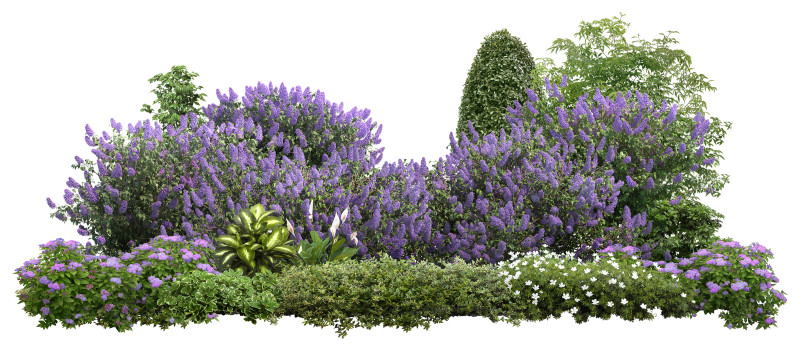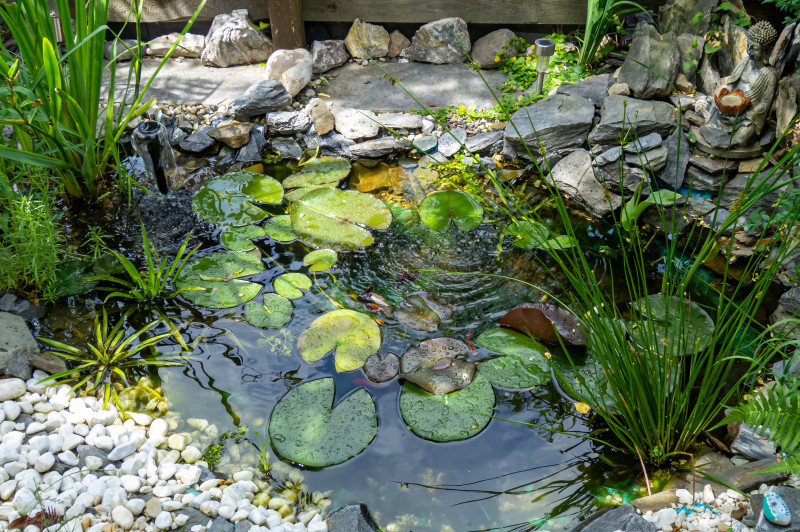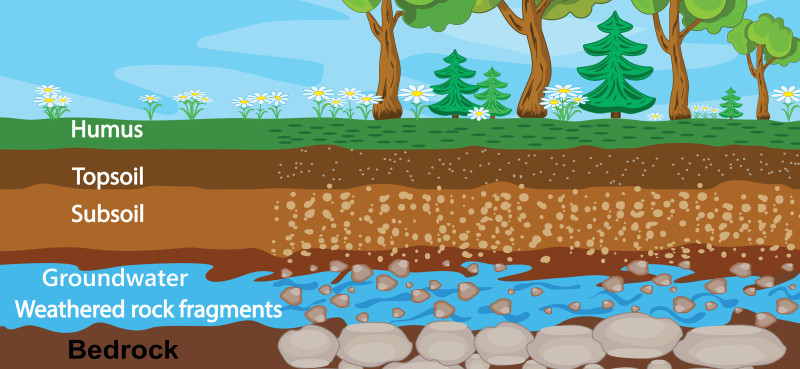Wildlife has four basic needs: food, water, nesting places, and “cover.” Cover for wildlife is what helps to hide them from the elements—heat, cold, rain, snow, wind—and predators. Cover takes many forms: Trees, dense shrubs, tall grasses, rock and brush piles, hollow logs, a stack of firewood, and even water, are places where animals can hide. You may not be able to provide all that, but the more choices you offer, the more inviting your yard will be.
Plant native grasses
Grasses provide cover for dashing into when wildlife feel threatened. Many animals, including rabbits, doves, quail, some songbirds, and rodents, also live and nest in them. Moreover, grasses help in winter when snow layers them, providing an insulating effect to help warm those living beneath.
Spare part of a flower bed for a stand of tall grasses, or assign an area of your yard to be a native grass garden. You could even allow a corner of your lawn to grow tall. Cut grasses down in the spring and watch them grow full again throughout the summer, knowing that within, mostly hidden from view, there’s a beehive, so to speak, of activity. List of native grasses
Build a brush pile
Add a brush pile. It needn’t be large and can be hidden in a corner behind shrubs if need be. It’ll be a safety net for frightened animals, and some mammals and birds may nest there as well.
A brush pile isn’t a compost pile or a stack of wood. Start it with fallen or cut limbs. Add to it every time you cut small tree limbs or shrubs. Don’t pack it tightly, let it be airy and a bit messy; all the many openings are ways for wildlife to enter. As it grows, more and more animals can make use of it.
Stack a woodpile
A woodpile is a neat stack of logs. It needn’t be wide but make it at least 3 feet (1 m) high. Lay each level crosswise to the one below. Cover just the top with a tarp to keep rain from pouring down through. Erect it in a shady spot near a butterfly garden. Butterflies and moths may find it convenient for resting or roosting overnight, and other wildlife will use it however it suits them. It’s also a place where small critters can hide out.
Pile up a rock pile
Some wildlife can’t control their body temperature; it’s always the same as the air around them. Those animals—toads, frogs, lizards, snakes, turtles, insects, and the like—need warmth to generate muscle activity. At night, when it cools off, their body temperature drops accordingly, and muscle activity becomes sluggish. So, the next day, when the sun warms the rocks, they provide a nifty heating pad, of sorts. Not only that but under the rocks are lower temperatures for animals wanting to cool off.
Let plant litter lay
Keep your yard a bit messy. To the extent you can, let plant and leaf litter stay where it falls. Insects will use it for cover, as well as for food and laying eggs. If falling leaves become a bit too deep in the fall, use your mower to turn them into mulch, and then scatter it in plant beds.
Create a toad shelter
If toads live in your yard, create a shelter with a small “cave” of rocks. Or knock a large entrance hole in the side of a flowerpot or deep flowerpot saucer and lay it upside down in a damp, shady part of your yard. See more ideas here.
Install a butterfly house
At night and on cloudy, rainy or chilly days butterflies and moths tend to hunker down in natural crevices, such as between rocks or logs, under tree bark or even in tall grasses. A butterfly house might offer a hiding place for them.
Place the house near or in your butterfly garden, in a shady spot. Many charming styles are available at online stores or your local birdseed shop. They’re also pretty easy to build. See here for instructions. Note, though, that they often go unused, even when they’re primed with foods enjoyed by butterflies, such as banana slices or rotting fruit. Nevertheless, they’re a pretty ornament in the garden and thoroughly appreciated by spiders and wasps, which are essential, beneficial animals.
Buy a bat house
If your yard has a large open area with a pond or other water source, hang up a house to shelter bats. Bats are beneficial mammals and play a vital role in helping to keep insect populations under control. They aren’t a threat to humans and will patrol your yard for insects every night—especially pests, like mosquitos. Provide them a convenient place to go “home” to every morning for shelter and safety. All about bats
*Top photo: Mallard Duck hiding in her nest within tall grasses. (WelcomeWildlife.com; cc by-nc-sa 3.0)
More reading:
Attract earthworms to your yard
The 4 basic needs of wildlife





